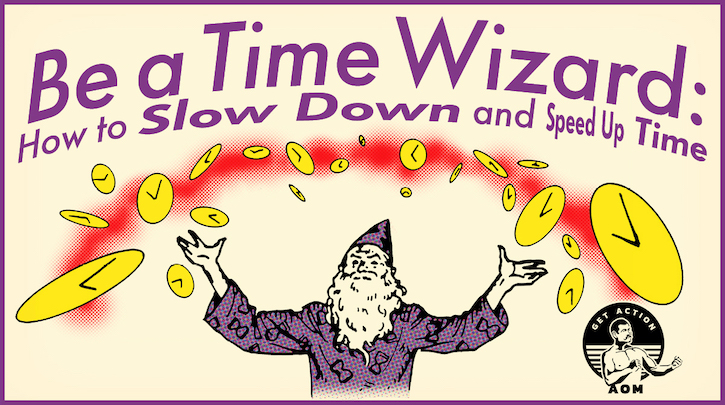
With our archives now 3,500+ articles deep, we’ve decided to republish a classic piece each Sunday to help our newer readers discover some of the best, evergreen gems from the past. This article was originally published in August 2014.
As we now approach the sunset of the summer season, take a look back on the last few months. Does it seem like your summer lasted forever, that it slowly floated along in a hot haze? Or did these last few months seem to go by in a blink?
Your answer to that question will likely depend on your age. If you’re a young buck, you’ll probably feel like you fit six months into the last three. If you’re longer in the tooth, chances are your summer seems to have gone by in a quick blur – much like the rest of your year.
Why does time seem to slow down when you’re young, and speed up as you get older? You may have heard it said that this phenomenon can be chalked up to the fact that when you’re younger, each year comprises a larger percentage of your total lifespan and thus feels more sizeable; one year is 1/14 of your life when you’re fourteen, but only 1/40 when you’re 40.
That’s a fun theory, but there’s an actual neurological reason for how our perception of time changes as we age. And once you understand it, you can become something of a time wizard — quickening or slowing the way time feels, and even making your life seem longer than it really is.
Living on Brain Time
Time is a fixed dimension. “Clock time” can be broken into minutes, seconds, and nanoseconds, and can be objectively measured. Even without an external chronometer to aid us, our internal clocks often do an excellent job of tracking time; if I asked you to guess the time right now, you’d probably be pretty close.
Yet how we perceive time is not always so accurate. Depending on our circumstances, time may seem to contract or expand, speed up or slow down. Dr. David Eagleman, neuroscientist and foremost researcher on time perception, calls this phenomenon “brain time,” and unlike clock time, its measurements are very subjective.
In contrast to our other senses like touch and taste, which are located in specific parts of our brains, our sense of time is woven throughout our neural matter. As Eagleman puts it, time is “metasensory” and “rides on top of all the others.” Because our perception of time is intricately tied up with our emotions and memories, the information we take in about how our hours are spent isn’t raw data. Instead, Eagleman explains, our minds filter the info before presenting it to us:
the brain goes through a lot of trouble to edit and present this story to you of what’s going on out there and how fast or slowly it happens. What your brain’s telling you [that] you see is not always what’s out there. It’s trying to put together the best, most useful story of what’s happening out there in the world.
Time then, Eagleman argues, is ultimately “a construction of the brain.”
Does “Matrix” Time Exist?
To understand when, how, and why your brain edits your perception of time, it’s useful to begin with what happens to your “brain time” when faced with a life-threatening situation. If you’ve ever felt close to death – gotten into a car wreck, engaged in a firefight, fell off a roof – you likely felt that time expanded during those fraught moments, and that everything happened in slow motion, à la The Matrix. In the aftermath, you probably remembered the experience in vivid detail.
Dr. Eagleman wanted to find out if people’s brains were really slowing down their perception of the world during these life-threatening situations, or if something else was going on. So he took a group of participants to one of the scariest “amusement” rides in the world: the SCAD. Riders are dropped, on their backs, into a 100-foot freefall. Those who try it typically find the experience utterly terrifying. Eagleman had his participants wear a wristwatch and asked them to look at it during their freefall. The watch would flash a digital read-out of a number a split-second too fast for the human eye to register under normal conditions. If fear slows down our perception of reality, Eagleman reasoned, the participants would be able to see the number as they dropped. Yet none were able to do so.
After their experience on the SCAD, Eagleman asked
No comments:
Post a Comment